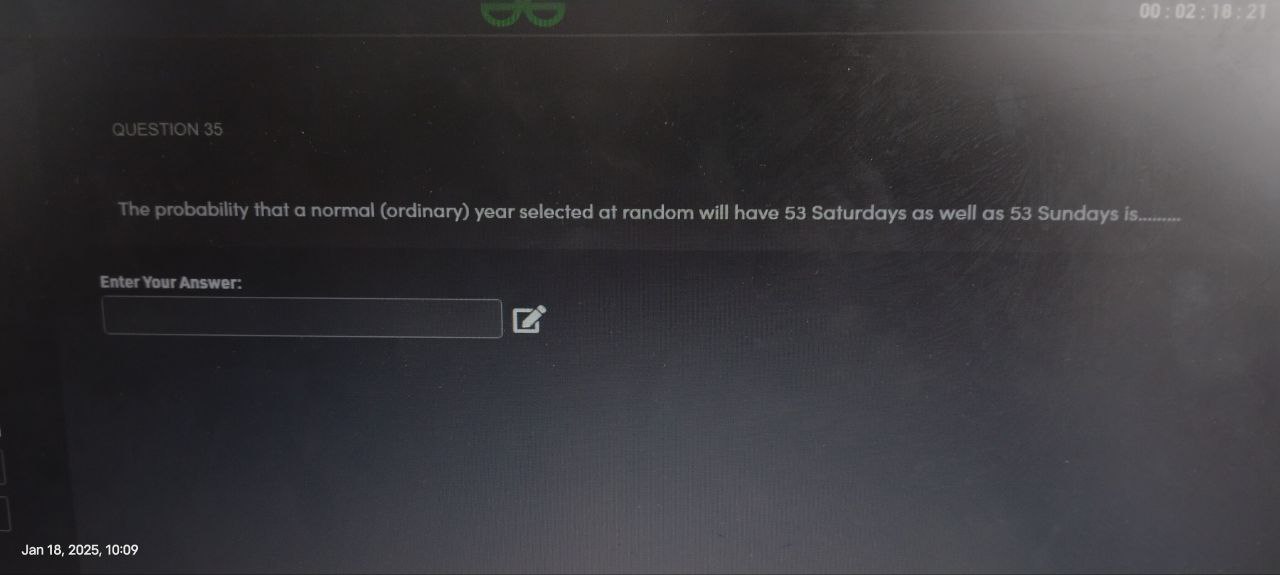The probability that a normal (ordinary) year selected at random will have 53 Saturdays as well as 53 Sundays is...

Understand the Problem
The question is asking for the probability of a normal (ordinary) year having 53 Saturdays and 53 Sundays. It involves understanding how days are distributed across the weeks in a standard year.
Answer
The probability is $0$.
Answer for screen readers
The probability that a normal (ordinary) year selected at random will have 53 Saturdays as well as 53 Sundays is $0$.
Steps to Solve
- Understanding the days in a normal year
A normal (ordinary) year has 365 days.
- Calculating weeks and days
We divide the total number of days by 7 (since there are 7 days in a week):
$$ \text{Number of weeks} = \frac{365}{7} \approx 52 \text{ weeks with 1 day left} $$
- Distributing the remaining day
This means there are 52 full weeks and 1 extra day. The extra day will determine if a specific day of the week occurs 53 times.
- Determining conditions for 53 Saturdays and Sundays
The extra day could be:
- Saturday: This results in 53 Saturdays and 52 Sundays.
- Sunday: This results in 52 Saturdays and 53 Sundays.
- Any other day (Monday to Friday): This results in 52 Saturdays and 52 Sundays.
- Calculating probabilities
From our findings,
- The scenarios that yield 53 Saturdays and 53 Sundays do not exist. Therefore, the probability is:
$$ \text{Probability} = 0 $$
The probability that a normal (ordinary) year selected at random will have 53 Saturdays as well as 53 Sundays is $0$.
More Information
In a standard calculation, because a normal year has 365 days, there's no way to have both 53 Saturdays and 53 Sundays simultaneously.
Tips
- A common mistake is assuming that just having 53 of one day guarantees 53 of the other. It does not; they are mutually exclusive given the distribution of days.
- Miscalculating the number of days in a year (confusing leap years and normal years) can lead to incorrect conclusions.
AI-generated content may contain errors. Please verify critical information